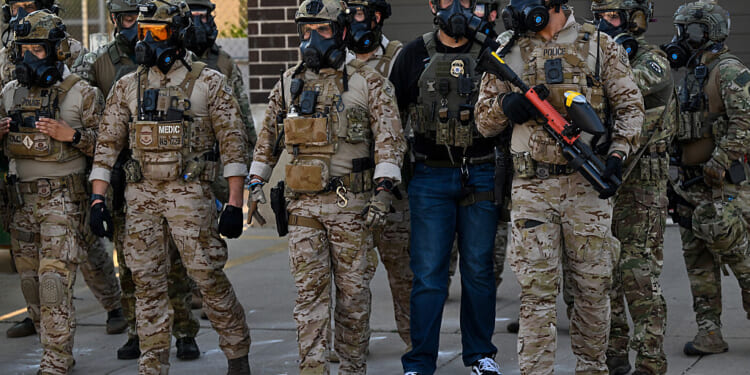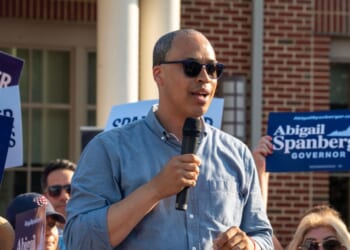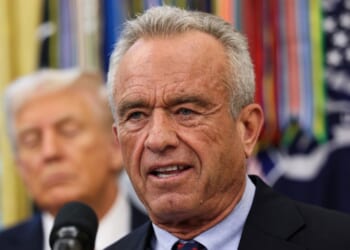Generally, when folks think of the US military being deployed, they have some faraway foreign land in mind. It’s easier, perhaps, to imagine the National Guard right here at home, but typically only for emergency relief during and after massive natural disasters, like hurricanes. But the Trump administration could change that perception for the future.
Multiple deployments to Democrat-led cities; a new “reaction force” for the National Guard; invites from Republican governors; and lawsuits that, should they go the president’s way, could solidify his authority and reduce the need for blue-state cooperation – all these factors coalesce into a catalyst for change that could make uniformed troops in the streets the new normal.
Where Trump Has Been
President Donald Trump made the news and drove Democrats and other never-Trumpers mad when he deployed 2,500 members of the National Guard to the nation’s capital to “clean up” the crime-ridden streets on August 11. By August 22, crime was down, and the streets were literally cleaner. He announced plans to do the same in Chicago shortly after.
But his use of the National Guard didn’t begin in DC. Much to the chagrin of Governor Gavin Newsom, Trump deployed more than 4,000 troops to Los Angeles to protect federal buildings and personnel during protests. He ordered up to 400 soldiers sent to Portland to protect federal property and personnel – and, despite a court order blocking the deployment, they were briefly dispatched to the city.
Another 500 troops were ordered to Chicago, though their deployment was also stalled in court, and there have been, since October 10, as many as 150 service members in Memphis, TN, patrolling with local law enforcement – an action endorsed by Tennessee Governor Bill Lee.
Federal Court Action
The three Democrat-led states to which the president ordered the National Guard – California, Oregon, and Illinois – are all suing the administration in federal court, and they’re getting mixed results so far. The deployments to Chicago and Portland have both been halted, pending a decision in each case. In California, however, the Ninth Circuit Court of Appeals ruled Trump could keep troops in the Golden State while litigation continues.

It all began in Los Angeles. The Trump administration sent immigration agents into the city earlier this year on a large scale, which led to massive – and sometimes destructive and dangerous – protests. This, in turn, led to Trump federalizing the California National Guard to protect the immigration agents. Governor Newsom sued, and the case made its way to the Ninth Circuit, which recently ruled that “we must give a great level of deference to the President’s determination that a predicate condition exits” that justifies the deployment.
If one of these cases results in a final ruling that states President Trump does, in fact, have the authority to call up the National Guard as he has been doing, with or without the governor’s cooperation, then the rest of the cases could easily fall in line. Chicago, Portland, and even other crime-riddled, Democrat-led cities in blue states that the president has talked about, like Baltimore or San Francisco, could see soldiers in the streets soon.
National Guard, Building for the Future
It would seem the administration is betting on that outcome: A recently leaked memo from October 8, signed by the National Guard Bureau Director of Operations Maj. Gen. Ronald Burkett, orders every state, plus Puerto Rico and Guam, to train a select number of service members to form a new “Quick Reaction Force” (QRF). Most will have to train 500 soldiers, while those with smaller populations will have reduced forces. All told, the goal is to have 23,500 or so troops trained in crowd control and civil disturbances, ready to deploy to any US city by early next year.
The Guardian also reported that a previous Pentagon memo from September ordered the DC National Guard to create a “specialized military police battalion … dedicated to ensuring safety and public order in the Nation’s capital as the circumstances may necessitate.” The latest letter requires the QRF to be trained and ready to roll by January 1, 2026.
What reason could the Trump administration have to train a force of 23,500 or so soldiers who can be sent quickly to American cities, if not to dramatically scale up the current deployments? However the lawsuits go, it alone suggests this novel use, even tangentially, of the National Guard as a law enforcement tool may become the new normal.
Liberty Nation does not endorse candidates, campaigns, or legislation, and this presentation is no endorsement.

















